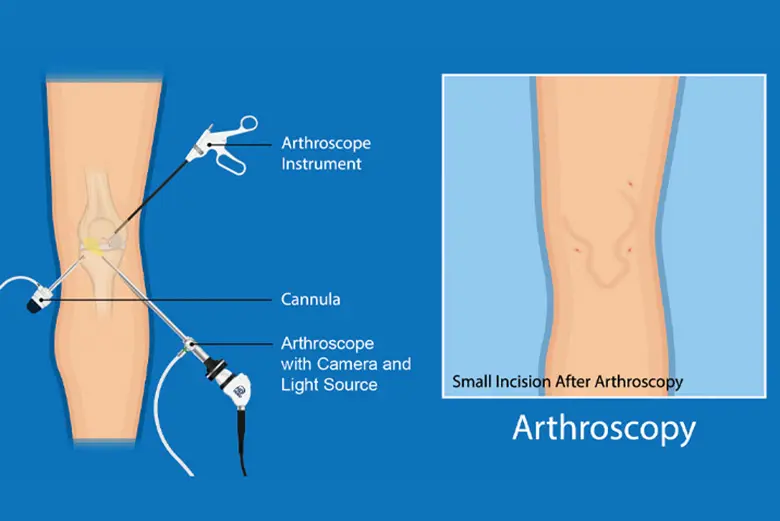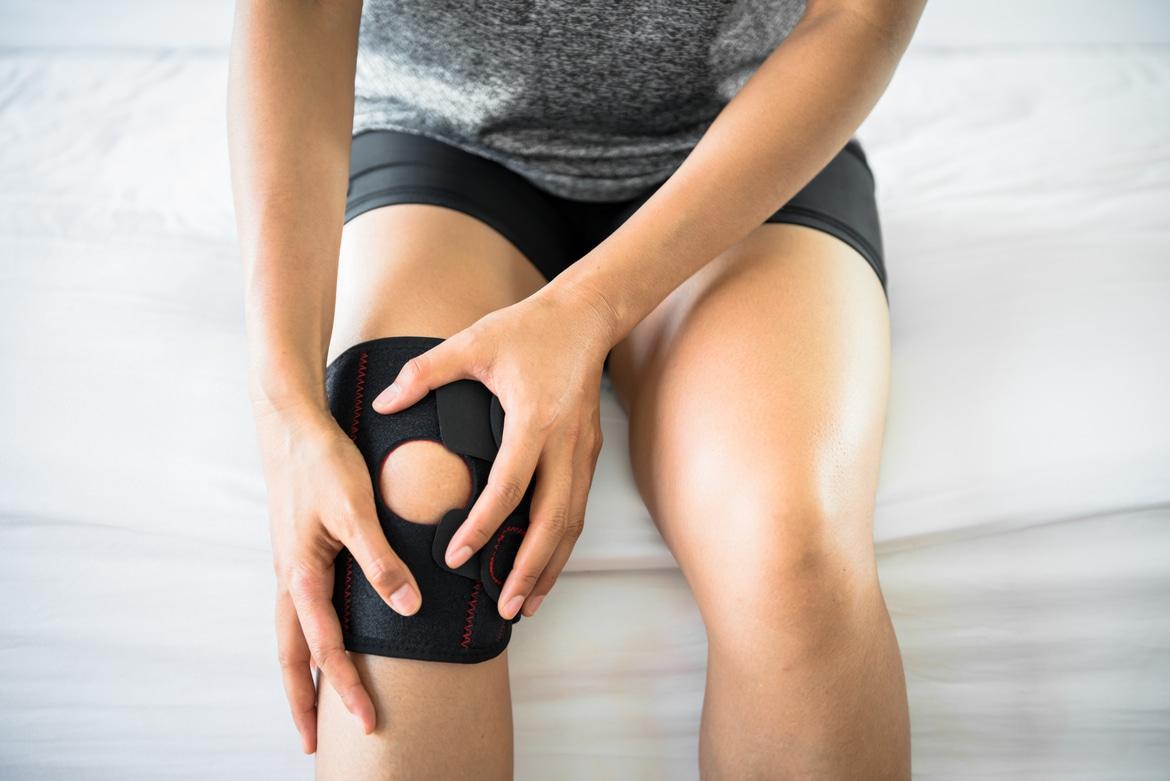What is knee arthroscopy?
Knee arthroscopy, or arthroscopic knee surgery, is a minimally invasive surgical procedure to repair or remove damaged structures in the knee joint.
How it works

Arthroscopy refers to the technique of inserting a small camera through small incisions to view, diagnose and perform certain repairs to the affected area.
As it is minimally invasive, recovery time is typically shorter, and the small incisions heal more easily compared to open surgery.
When do you need knee arthroscopy?
Knee arthroscopy may be recommended if you experience knee problems or injuries such as:
- Torn anterior or posterior cruciate ligaments
- Torn meniscus (the cartilage between the bones in the knee)
- Patella that’s out of position
- Pieces of torn cartilage that are loose in the joint
- Removal of a Baker’s cyst
- Swollen synovium (the lining in the joint)
What are the risks and complications of knee arthroscopy?
Knee arthroscopy is a minimally invasive procedure and is generally considered safe. However, like any other knee surgery, it carries a small risk.
Common knee arthroscopy complications include:
- Bleeding in the joints or blood clots
- Chronic stiffness in the knee
- Inadvertent damage to the nerves or surrounding tissue
- Infection inside the knee
What can you expect in knee arthroscopy?
Knee arthroscopy may be performed under local or general anaesthesia. Your doctor will discuss the most suitable option with you.
During the procedure
Your surgeon will make several small incisions in the knee to insert the arthroscope, or camera. Saline solution is used to expand the area for the surgeon to get a better view of the knee joint.
Your surgeon will conduct the repair work through the incisions. At the end of the surgery, the area is drained of saline.
Care and recovery after knee arthroscopy
Knee arthroscopy is a minimally invasive procedure. The recovery time after knee arthroscopy is shorter compared to open surgery.
Light activity is possible 1 – 3 weeks after the procedure. The amount of time taken to fully recover may differ depending on the individual. However, you will most likely be able to resume your normal daily activities after 6 – 8 weeks.
Your doctor will instruct you on caring for your incision wounds at home, which may include:
- Applying ice packs to reduce swelling and pain
- Changing the dressing regularly, as directed, to prevent infection
- Getting sufficient rest
- Keeping your leg elevated for several days after surgery
- Relieving pressure on the knee joint by using crutches
- Taking pain medication as directed






